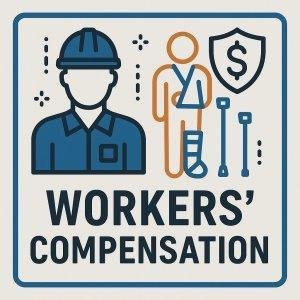
Fast-Track Workers’ Comp Quotes for Georgia Adult Day Care Centers
July 26, 2025
Workers’ Comp Insurance for GA Administrative Services Orgs
July 27, 2025In today’s competitive business surroundings, maintaining continuous workers’ compensation coverage is not just a regulatory requirement but a critical component of risk management.Though, the unexpected non-renewal of a workers’ compensation policy can leave employers exposed to notable financial adn operational vulnerabilities. Navigating this challenge swiftly and strategically is essential to safeguard both employees and the institution. this article outlines the key steps businesses should take to secure new workers’ compensation coverage promptly, ensuring uninterrupted protection and compliance in the face of policy non-renewal.
Table of Contents
- understanding the Common Causes of Workers Comp Policy Non-Renewal
- Assessing Your Current Risk Profile and Coverage gaps
- Strategies for Promptly Securing Alternative Workers Comp Coverage
- Working with Brokers and Carriers to Expedite Policy Approval
- Q&A
- Key Takeaways
Understanding the Common Causes of Workers Comp Policy Non-Renewal
When it comes to workers comp policy non-renewal, insurers typically look for specific risk indicators that suggest a client may no longer align with their coverage criteria. One of the most frequent triggers is a high frequency or severity of workplace injuries. Companies with repeated claims or significant losses can be viewed as high-risk, prompting insurers to reconsider renewal. Additionally, failing to comply with safety regulations or lacking proper workplace injury prevention programs can raise red flags. Another critical cause lies in financial instability or inconsistencies in premium payments, which can prompt carriers to discontinue coverage as maintaining the policy becomes financially unviable.
Other notable reasons often fall under operational and administrative concerns. These include:
- Poor claims management or failure to report injuries promptly
- Changes in business operations increasing risk without adequate adjustment in coverage
- Negative audit findings revealing underreported payroll or misclassified employees
- Industry-specific risks that insurers are withdrawing from or limiting exposure to
Understanding these factors can help businesses proactively address issues before renewal time, ensuring continuous coverage and minimizing costly interruptions.
| Cause | Impact on Renewal | Mitigation Strategies |
|---|---|---|
| High Claim Frequency | Increased Premiums or Non-Renewal | Implement robust safety training and injury prevention programs |
| Late Premium Payments | policy Cancellation or non-renewal | ensure timely payments and financial stability |
| Poor Claims Reporting | Damaged Carrier Relationship | Establish clear, prompt claims reporting procedures |
Assessing Your current Risk Profile and Coverage Gaps
Before diving into new coverage options, it’s imperative to conduct a thorough evaluation of your current workers’ compensation policy to identify any risk exposures that might be underinsured or overlooked. This step involves analyzing your workplace accident history, industry-specific hazards, and current claims trends. By understanding these factors, you can pinpoint gaps that could leave your business vulnerable to costly payouts or regulatory penalties. Utilize internal incident reports, safety audits, and employee feedback to develop a extensive risk profile tailored to your operational realities.
to assist with this, create a simple matrix that compares your existing coverage elements against potential risk areas. Elements such as wage replacement limits, medical coverage caps, and rehabilitation services should be scrutinized for adequacy.Below is a sample framework to guide your assessment:
| Coverage Element | Current Limit | Potential Gap | Action Required |
|---|---|---|---|
| Wage Replacement | 60% of wages | May not fully cover high earners | Increase limit or add supplemental insurance |
| Medical Expenses | $50,000 per injury | Inadequate for severe injuries | Negotiate higher caps or broader coverage |
| Rehabilitation Services | 12 months coverage | May end too early, impacting recovery | Extend benefit duration |
- Document all findings and communicate them with your insurance broker to ensure they align with your risk tolerance and budget.
- Consider incorporating loss prevention programs to actively reduce claims frequency and severity, thereby enhancing your position when negotiating new policies.
Strategies for Promptly Securing alternative Workers Comp Coverage
Together,prepare a comprehensive business profile including recent safety records,claims history,and workplace injury prevention measures. Presenting this data upfront builds credibility and expedites underwriting decisions. Consider these key tactics:
- Engage multiple brokers to increase access to diverse markets.
- Request immediate quotes while emphasizing your intention to secure coverage quickly.
- Review and update safety protocols to improve your risk profile before request.
- Explore state-run or assigned risk pools as a temporary solution.
| Action | Expected Timeline | Impact on Approval |
|---|---|---|
| Contact multiple brokers | 1-2 days | High |
| Submit detailed business profile | 2-3 days | Medium |
| Obtain interim coverage from state pool | 3-5 days | Low-Medium |
| Revise safety protocols | 1 week | Long-term benefit |
Working with Brokers and Carriers to Expedite Policy Approval
Partnering closely with brokers and carriers can dramatically reduce the time it takes to secure a new workers’ compensation policy after a non-renewal. Start by providing brokers with a comprehensive and organized package of your business’s risk profile, loss history, and safety measures. This openness helps brokers identify the most appropriate carriers swiftly and negotiate better terms on your behalf.Prompt communication and responsiveness to any additional data requests from carriers will also facilitate faster policy underwriting and approval.
Leverage your broker’s industry relationships by focusing on carriers known for efficient turnaround times and flexible underwriting standards. You can even propose a streamlined process checklist, ensuring both parties are aligned on:
- Documentation requirements
- Key deadlines and follow-ups
- Claims history verification
- Risk mitigation reports
Below is a simple timeline guideline to optimize interactions with brokers and carriers:
| Action | Recommended Timing | Outcome |
|---|---|---|
| Submit full risk package | Day 1 | Accelerated carrier review |
| Broker follow-up call | Day 3 | Clarify questions, update status |
| Carrier feedback & document requests | Day 5 | Fast-tracking underwriting |
| Final underwriting approval | Day 10 | Policy issuance |
Q&A
Q&A: Workers Comp Policy Non-Renewal – Steps to Secure Coverage Fast
Q1: What does it mean when a workers compensation policy is non-renewed?
A1: When an insurer issues a non-renewal notice for a workers compensation (workers comp) policy, it means they have decided not to extend the existing coverage beyond the current policy term. This leaves the employer responsible for securing new coverage before the policy expires to maintain compliance and protect employees.
Q2: Why might an insurer choose to non-renew a workers comp policy?
A2: Common reasons include high claim frequency or severity, increased risk exposure of the business, changes in operations not communicated to the insurer, poor loss control measures, or underwriting guideline changes within the insurance company.
Q3: What risks does a business face if it fails to secure workers comp coverage after non-renewal?
A3: Operating without workers comp insurance can lead to significant penalties, including fines, legal liabilities, and loss of business licenses or contracts. Additionally, injured employees may pursue costly litigation, and the company’s financial stability can be compromised.
Q4: What are the immediate steps an employer should take after receiving a non-renewal notice?
A4: Employers should:
- Review the non-renewal notice carefully for deadlines.
- Contact their current insurer to confirm coverage end date.
- Gather all relevant business and claims information for underwriting.
- Begin shopping for replacement policies immediately, involving insurance brokers if applicable.
- Consider loss control improvements to enhance insurability.
Q5: How can businesses expedite the process of securing new workers comp coverage?
A5: To speed up coverage procurement, employers should prepare comprehensive documentation, including payroll records, loss history, and safety protocols. Working with an experienced insurance broker familiar with workers comp policies can facilitate access to multiple carriers quickly. Prompt communication and transparency with potential insurers also help reduce underwriting delays.
Q6: are ther alternatives if a standard workers comp policy is tough to obtain after non-renewal?
A6: Yes. Employers may explore options such as residual markets (state-funded assigned risk pools), self-insurance (if permitted and feasible), or specialized insurance programs tailored to high-risk industries. Consulting with an insurance professional is advisable to identify the best alternative.Q7: How can businesses prevent future non-renewals of their workers comp policy?
A7: Proactive loss control,regular safety training,effective claims management,and maintaining open communication with insurers contribute to policy renewals. Additionally, reviewing and adjusting operations to reduce risk exposure supports long-term insurability.Q8: what role does an insurance broker play in addressing workers comp non-renewal?
A8: Brokers provide expert guidance by assessing risk, marketing coverage to multiple carriers, negotiating terms, and ensuring smooth transitions between policies. Their industry relationships and knowledge enable faster placement of coverage, minimizing business disruption.
This Q&A provides a concise yet comprehensive overview for business professionals facing workers comp policy non-renewal, emphasizing actionable steps to secure coverage swiftly and maintain compliance.
Key Takeaways
In today’s dynamic business environment, a non-renewal of your workers’ compensation policy can pose significant operational risks. Promptly addressing this challenge by understanding the underlying reasons, communicating proactively with insurers, and exploring alternative coverage options is essential to maintaining compliance and protecting your workforce. By following the strategic steps outlined, businesses can secure replacement coverage quickly and minimize potential disruptions. Staying informed and prepared ensures that you uphold your obligations while safeguarding your company’s financial stability and reputation.
“This content was generated with the assistance of artificial intelligence. While we strive for accuracy, AI-generated content may not always reflect the most current information or professional advice. Users are encouraged to independently verify critical information and, where appropriate, consult with qualified professionals, lawyers, state statutes and regulations & NCCI rules & manuals before making decisions based on this content.






